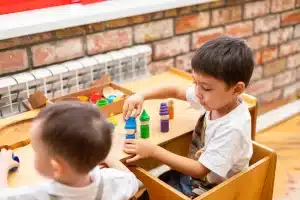The Benefits of Open-Ended Toys for Creative Play
Introduction
Open-ended toys are a wonderful tool for encouraging creativity in children. Unlike toys with a specific purpose or outcome, open-ended toys allow children to explore their imagination, experiment, and express themselves freely. In this article, we will delve into the numerous benefits that open-ended toys bring to children’s development and why they should be an essential part of every child’s playtime.
The Power of Play
Play is a fundamental aspect of a child’s growth and development. It is through play that children learn to problem-solve, develop social skills, and enhance their cognitive abilities. Open-ended toys provide the perfect platform for children to engage in imaginative play, where they can invent scenarios, act out roles, and explore various possibilities. This imaginative play helps children develop essential life skills and prepares them for future challenges.
Benefits of Open-Ended Toys
1. Encourages Creativity and Imagination
- Open-ended toys offer limitless possibilities, allowing children to use their imagination to transform the toy into anything they desire.
- Children can create their own stories, building narrative skills and fostering creative thinking.
- Through open-ended play, children develop problem-solving skills as they explore different ways to use the toy.
2. Promotes Cognitive Development
- Open-ended toys engage multiple senses, stimulating brain development and cognitive abilities.
- Children learn cause and effect, honing their critical thinking skills.
- As children experiment with open-ended toys, they enhance their spatial awareness and logical reasoning.
3. Supports Social and Emotional Development
- Open-ended toys encourage cooperative play, allowing children to interact, negotiate, and collaborate with others.
- Children develop empathy and emotional intelligence as they imagine themselves in different roles and situations.
- Through open-ended play, children learn to express their emotions, thereby promoting healthy emotional development.
4. Fosters Fine Motor Skills
- Manipulating open-ended toys, such as building blocks or art materials, helps children refine their hand-eye coordination and fine motor skills.
- Children learn to grasp, stack, and assemble objects, developing dexterity and precision.
5. Encourages Self-Directed Learning
- Open-ended play empowers children to take control of their learning experience.
- Children explore and experiment at their own pace and according to their interests.
- Open-ended toys provide opportunities for self-expression and individuality.
Conclusion
Open-ended toys have a remarkable impact on children’s development, nurturing their creativity, cognitive abilities, social skills, and fine motor skills. These toys encourage imaginative play, allowing children to explore their limitless potential. By incorporating open-ended toys into a child’s playtime, parents and educators can provide a stimulating and supportive environment that fosters growth and development. So, let’s embrace the wonders of open-ended toys and watch our children thrive!





